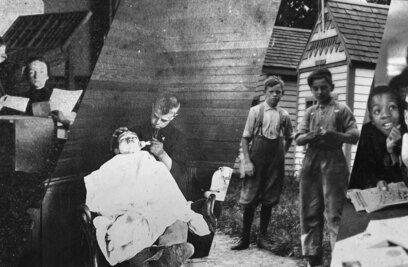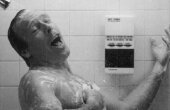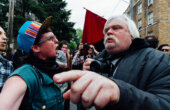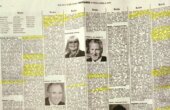The Engineered Student: On B. F. Skinner’s Teaching Machine
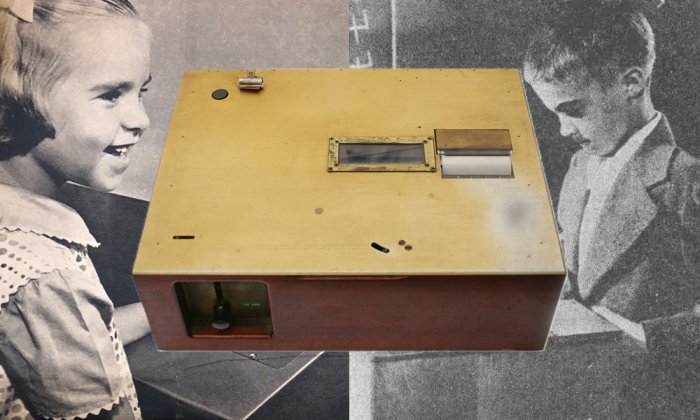
In the fall of 1953, Harvard psychology professor B. F. Skinner visited his daughter’s fourth grade math class at Shady Hill, a private school in Cambridge, Massachusetts, where he observed the teacher and students with dismay. The students were all seated at their desks, working on arithmetic problems written on the blackboard as the teacher walked up and down the rows of desks, looking at the students’ work, pointing out the mistakes that she noticed. Some students finished the work quickly, Skinner reported, and squirmed in their seats with impatience, waiting for the next set of instructions. Other students squirmed with frustration as they struggled to finish the assignment at all. Eventually the lesson was over; the work was collected so the teacher could take the papers home, grade them, and return them to the class the following day.
“I suddenly realized that something must be done,” Skinner later wrote in his autobiography. The classroom activities violated two key principles of his behaviorist theory of learning. Students were not told immediately whether they had an answer right or wrong. A graded paper returned a day later failed to offer the type of prompt and positive feedback that Skinner believed necessary to modify behavior — that is, to learn. Furthermore, the students were all forced to proceed at the same pace through the lesson, regardless of their level of ability or comprehension. This method of instruction provided the wrong sort of reinforcement, Skinner argued, penalizing the students who could move more quickly as well as those who needed to move more slowly through the materials.
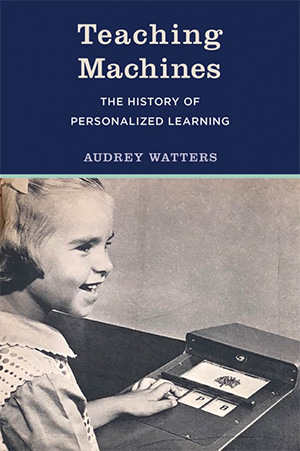
A few days later, Skinner built a prototype of a mechanical device that he believed would solve these problems — and solve them not only for his daughter’s classroom but ideally for the entire education system. His teaching machine, he argued, would enable a student to progress through exercises that were perfectly matched to her level of knowledge and skill, assessing her understanding of each new concept, and giving immediate feedback and encouragement along the way.
It was a “primitive” machine, Skinner admitted, fashioned out of a rectangular wooden box. “Problems in arithmetic were printed on cards,” he explained. “The student placed the card in the machine and composed a two-digital answer along one side by moving two levers. If the answer was right, a light appeared in a hole in the card.” He quickly built a second model in which a student manipulated sliders bearing the numbers 0 through 9 in order to compose an answer. In another prototype, the student turned a knob after setting the answer. If the answer was wrong, the knob would not turn. If the answer was right, the knob would move freely, and a bell would ring.
A ringing bell is associated with some of the earliest and most famous experiments in behavior modification, namely those of the Russian physiologist Ivan Pavlov. Pavlov had published his research on dogs in 1897, describing how he’d conditioned the animals to respond to a bell by salivating — work for which he would later win the Nobel Prize in Medicine.
Skinner’s own research was, to a certain extent, built on Pavlov’s, moving from what was considered the “classical conditioning” of involuntary responses — stimulating salivation with food, for example — to an “operant conditioning” of voluntary ones. By using operating conditioning — that is, by administering rewards or punishments — all sorts of behaviors could be manipulated, Skinner argued, not simply reflex responses; and these behaviors could be bolstered through “schedules of reinforcement,” the title of Skinner’s 1957 book cowritten with colleague Charles Ferster. Although Skinner insisted that he and Pavlov “were studying very different processes,” the Russian scientist was incredibly influential on the early science of learning in general, focused as it mostly was on animal rather than human behavior.
Although Skinner insisted that he and Pavlov “were studying very different processes,” the Russian scientist was incredibly influential on the early science of learning in general, focused as it mostly was on animal rather than human behavior.
For Skinner, studying learning meant studying behavior, and vice versa. “For me,” he wrote in his autobiography, “behaviorism was psychology.” Skinner contrasted this with “mentalism,” a belief to which he would frequently accuse his fellow students and professors of ascribing. By “mentalism,” Skinner meant both Freudian and Jungian analysis — that is, ideas about consciousness and unconsciousness, ideas that had garnered significant popular not just scientific appeal in the early twentieth century. One could not observe or verify what happens in “the mind,” behaviorists like Skinner contended, and therefore “the mind” itself could not really be examined through scientific experimentation or inquiry. Indeed, in reviewing Carl Jung’s book “Psychological Types” in 1923 for the New Republic, behaviorist John B. Watson — arguably the best known American behaviorist before Skinner — dismissed the work of the Swiss psychoanalyst as relying on “unjustified and unsupportable assumptions,” on “magic” and not science. Scientific study, behaviorists insisted, meant analyzing activities — behaviors — rather than speculating about inward motivations or sensations.
Skinner described his approach as radical behaviorism. Rather than seeing “the mind” as entirely beyond scientific inquiry, Skinner argued that one could actually examine events “taking place in the private world within the skin” — but one must do so through a behaviorist lens. This meant that language and learning, as historian of psychology Alexandra Rutherford points out in her work on Skinner’s cultural impact, “all come under the purview of the experimental analysis of behavior, but they are radically reconceptualized as forms of behavior ultimately dependent on the external or social environment for their development.”
If behavior was controlled (and controllable) by the environment, then what better way to make adjustments to individuals — and, as Skinner imagined, to all of society — than by machine.
Skinner’s commitment to behaviorism was not simply “academic,” a term that is often used to suggest a theory divorced from practice. Skinner was a best-selling author, a public intellectual, a “visible scientist.” He was an inventor of psychological gadgetry and a promoter of what Rutherford has called “a technology of behavior” — a technology that, despite Skinner’s rather controversial reputation, has “become a clearly identifiable component of life beyond the laboratory.” Indeed, Rutherford argues that “Skinner’s most enduring cultural legacy is his technology of behavior, rather than his experimental science or his philosophy of radical behaviorism.”
And that is a legacy that is foundational for education technology. It’s not where the story of teaching machines begins, but it’s almost always how the story of teaching machines ends: deeply intertwined with Skinner and with his psycho-technologies. It is a foundation from which education technology has never entirely broken.
As one of the leading scholars in the field of behavioral science, Skinner was invited to speak at the University of Pittsburgh in March 1954 at a conference on the practical applications of behaviorism, and “excited about teaching machines,” in his words, he decided to use the opportunity to discuss education. With his machine on a platform beside him, he presented to his peers a paper titled “The Science of Learning and the Art of Teaching,” which was published that summer in the Harvard Educational Review.
Skinner opened his remarks by chronicling some of the recent achievements in the field of learning. “Special techniques have been designed,” he explained, “to arrange what are called contingencies of reinforcement — the relations which prevail between behavior on the one hand and the consequences of that behavior on the other — with the result that a much more effective control of behavior has been achieved.”
Skinner used his speech to review for the audience his research on pigeons — work that had begun during World War II. (His earliest experiments — experiments that had led to the invention of a training device dubbed the “Skinner Box” — had been performed on rats.) Skinner had built a contraption that, using his conditioning methods, would enable a pigeon to steer a flying object; and during a war increasingly reliant on air weaponry, Skinner imagined that that object could even be a missile.
In 1943, General Mills had been awarded a $25,000 contract to develop a “homing device” under the code name Project Pigeon. But the military never implemented the pigeon-guided missiles, and Skinner wrote in his autobiography that “Project Pigeon was discouraging.” Other scientists and engineers were not convinced the idea would work — they “simply did not trust pigeons,” he admitted, insisting that “it was not a total loss.” “Our pigeons never had the chance to be heroes,” Skinner later lamented, but they had “established themselves as excellent laboratory subjects.”
Project Pigeon helped Skinner to recognize that his research “was no longer merely an experimental analysis. It had given rise to a technology.” His work with the pigeons brought him widespread recognition in both the academic and popular press, even as many of the details of Project Pigeon remained classified. “Pigeons Play Piano and Do Other Smart Things,” the Worcester Gazette had reported about those “smart birds at Harvard” a few years earlier, showcasing the birds from Skinner’s lab that had been trained to play ping-pong.
“Our pigeons never had the chance to be heroes,” Skinner later lamented, but they had “established themselves as excellent laboratory subjects.”
“From this exciting prospect of an advancing science of learning, it is a great shock,” Skinner told the crowd at the University of Pittsburgh, “to turn to that branch of technology which is most directly concerned with the learning process — education.” Skinner then proceeded to repeat his complaints about the arrangement of the classroom, noting that unlike his pigeons, which had been taught to perform tasks by being rewarded with food pellets, most students experienced negative rather than positive reinforcements. Behavioral management had become less a matter of corporal punishment in schools, he admitted, but
anyone who visits the lower grades of the average school today will observe that a change has been made, not from aversive to positive control, but from one form of aversive stimulation to another. The child at his desk, filling in his workbook, is behaving primarily to escape from the threat of a series of minor aversive events — the teacher’s displeasure, the criticism or ridicule of his classmates, an ignominious showing in a competition, low marks, a trip to the office ‘to be talked to’ by the principal, or a word to the parent who may still resort to the birch rod.
Positive reinforcement was possible, but Skinner estimated that it would take “something on the order of 25,000 contingencies” to properly shape mathematical behavior — “a guess” he later admitted in his autobiography. Of course, a classroom full of students all relied on the same teacher to provide this feedback, and a teacher could not possibly provide that many corrections or consequences.
“The simple fact is that, as a mere reinforcing mechanism, the teacher is out of date,” Skinner told his Pittsburgh colleagues. “This would be true even if a single teacher devoted all her time to a single child, but her inadequacy is multiplied many-fold when she must serve as a reinforcing device to many children at once. If the teacher is to take advantage of recent advances in the study of learning, she must have the help of mechanical devices.”
“He’s kidding,” a professor of education in the audience muttered to a colleague.
He wasn’t.
His teaching machine, Skinner argued, boasted several important features: It gave immediate feedback, and while a whole class could set to work on their devices, each individual student could progress at their own rate. Furthermore, the machine could liberate the teacher from the tedious work of grading.
A brief account of Skinner’s machine appeared in July 1954 in the Science News Letter, similarly concluding that the device would aid student learning, and with it, “the teacher is relieved of the time-wasting, temper-trying task of correcting stacks of arithmetic papers.”
Newspapers picked up the story that summer too. “Machine teaches kids arithmetic painlessly,” the New York Herald Tribune reported. The Worcester Telegram announced the “Machine Age in Teaching.” The World Telegram called it “the Atomic Age.” “Miracle Gadget Makes Boys Like Arithmetic,” the Boston Herald declared. The stories all credited the Harvard psychologist with the invention of the device. The teaching machine seemed just the right sort of gadget to stir postwar America’s imagination about the future of education.
A few years later, in the December 1957 issue of Contemporary Psychology, its editor, the renowned historian of psychology Edwin G. Boring, invoked Skinner and his role in inventing teaching machines in his monthly (gossip) column, CP SPEAKS. Following a paragraph praising the publication by the University of Pittsburgh’s Lloyd Homme and David Klaus of a manual that would aid students in running their own behavioral conditioning experiments, Boring made a brief aside: “Homme, by the way, has been at Harvard for the past year, working on another idea that originated with Skinner, the technique for teaching by machine.”
Boring, who’d been quite cautious in his own scholarship about making these sorts of categorical claims of origin or invention, should probably have known better than to call Skinner “the first.” But the shaping of the origin myth of teaching machines was already well underway — until, that is, the action of Ohio State University (OSU) psychologist Horace English who wrote, rather indignantly, to Boring on January 30, 1958.
English said he felt obliged to correct Boring’s history and his attribution of the invention to Skinner: “When the public press gave Skinner credit for originating ‘teaching by machine,’ it did not seem worth while to protest. But when the scholarly editor of CP falls into this trap; dear, oh dear.” English stepped up to defend his OSU colleague, Sidney Pressey.
Be it known then that Sidney Pressey published descriptions of machines which gave reinforcement by immediate knowledge of results and of one machine which gave reinforcement in the form of a piece of candy — when the child pressed the right lever, if you please. There have been at least six doctoral dissertations devoted to finding the effectiveness of such machines. And there is even a published bibliography of such devices, including many experimenters who preceded Pressey into the field. Most of this was before our friend Skinner even finished grade school.
Be wary of overpromising when it comes to the science, Sidney Pressey warned. Be wary of overcommitting when it comes to the business.
“Originate, indeed!” English huffed, then quickly added, “This note is not for publication but it should lead to some sort of correction. Sidney hasn’t said beans in my hearing; maybe he does not know of Skinner’s new proposal. Does Skinner have any idea of the wealth of research that has preceded him?”
Boring promptly (and rather sheepishly) wrote back to English. “While it’s a nuisance not being omniscient, I remain much more interested in education than in defense of the acts of this fallible organism that I call Me. Error often promotes truth, and this error could produce a good note on the history of teaching machines, using CP to belabor.” Boring said he would ask Pressey to write an article for Contemporary Psychology to clarify matters.
Two days later, Boring had lunch with his fellow Harvard colleague Skinner and grilled him about the history of teaching machines, a conversation that can’t have been too pleasant since, decades earlier, Boring had criticized Skinner’s account of the history of psychology and had challenged several passages in Skinner’s dissertation: “I fear that you may be distorting history,” Boring had written in the margins. (Skinner boasted in his autobiography that he’d refused to make any changes to his text in response.) During their lunch, Skinner informed Boring that he was indeed familiar with Pressey’s work; moreover, he was in the middle of writing an article that would tackle the long history of teaching machines.
“I suggested to Fred that he, instead of Sidney or Horace, pick on me for the education of the public,” Boring wrote in a letter to the two Ohio State psychology professors later that day, “that he send CP a statement about the history of teaching machines and I will run it as a letter or in CP SPEAKS, depending on what it looks like when I see it.”
In June, a correction did finally appear in CP SPEAKS — not a statement from Skinner, but rather a short bit by Boring, opening in the typical, punchy manner of the editor’s column: “Here comes Horace B. English, on his familiar charger, right to the door of CP’s tent, defending the honor of Sidney L. Pressey who invented a teaching machine before Skinner had even got to Hamilton College.” The column, while mildly apologetic to Pressey about the error, still centered Skinner in the narrative. Boring cited Skinner’s position that “he doubted whether the originator of the teaching machine could now be identified,” pointing to a patent filed in 1886 by one Halcyon Skinner (no relation to B. F.) for a machine for teaching spelling. Boring tried to clarify too — an indication, perhaps, that Skinner had helped in crafting this response after all — that there were important differences between the machines of Pressey and those of Skinner: “The teaching of Pressey’s machine depended on trial-error-and-success with the successes reinforced,” the column read. “Skinner is undertaking to substitute operant responses, eliminating errors. Nothing but success.”
Boring admitted in a letter to English and Pressey that he did not “fully understand the difference.”
Later that year, in October, Skinner published his article on teaching machines in Science — an article which, as he’d described it to Boring, did give credit to Pressey for designing devices in the 1920s. But much as in Boring’s CP SPEAKS column, Skinner insisted that his theory of learning — his practices of behavioral management and arrangements of “contingencies of reinforcement” — differed significantly from Pressey’s and as such, the two men’s teaching machines differed as well. The science of learning had advanced much in the decades since Pressey’s invention, Skinner maintained, although the practices of schooling had not. The “‘industrial revolution in education’ which Pressey envisioned stubbornly refused to come about,” Skinner observed. “Pressey’s machines succumbed in part to cultural inertia; the world of education was not ready for them.”
Arguably, Pressey shared some of that sentiment: His attempts to commercialize teaching machines in the 1920s and 1930s had indeed not gone very far. Despite his disappointments, however, he had remained attuned to the field. He had seen the short account of Skinner’s teaching machines in Science News Letter in 1954 and had subsequently written to the Harvard professor that year, sending him reprints of the three articles he’d published in School and Society on the topic (in 1926, 1927, and 1932) and encouraging him to “stay with the general idea and see it through to some general fruition.”
“It has long been my belief,” Pressey told Skinner, “that mechanical devices in schools were as feasible as in banks, and when I saw your pigeon demonstration at the Cleveland [American Psychological Association] meetings last year I wondered if something of this sort was not in the offering. I shall expect to see a busy child into [sic] a similar display case in New York this September.” Skinner had lunch with Pressey and his wife that fall at the annual American Psychological Association conference — “the most stimulating episode of the meetings,” Pressey later wrote to Skinner, full of encouragement for him to continue to pursue the development of teaching machines.
A few months after their New York meeting, Pressey wrote to Skinner again, this time with a much more somber and cautionary tone:
May I urge, however, that in advance of any manufacture, you do continue experimentation. An experience of mine over twenty years ago may have some relevance. I then got an apparatus company to manufacture, and put on preliminary sale, one of my devices. It soon became evident that I had not got all the bugs out of the mechanism. Also, I had not got all of the psychological bugs out of the idea. In successive runs through the machine, students did indeed learn very rapidly, and so far everything looked encouraging. But then, and also in more recent experimentation, when I checked on that learning by repeating some of the material verbatim but in a little different context a week later, very little appeared left. If the test was rephrased and in a different context, almost nothing seemed retained. As indicated in the reprint I sent you recently, it was only when our devices became part of a total system of instruction that retention seemed enough to be possibly worthwhile. Of course, I expected losses over a period of time, and in transfer. But though I was not unsophisticated in experiments in learning, and of long experience in class-room experimentation, I was still surprised at the smallness of the outcomes.
Be wary of overpromising when it comes to the science, Pressey warned. Be wary of overcommitting when it comes to the business. The advice from one professor-inventor to another: Be wary of how you proceed.
Skinner, however, was quite convinced that his machine was superior, that the learning science was better, and that the education world was, in fact, finally ready for automation. Moreover, he had the deep connections to industry and to financing that his professorship at Harvard provided. Francis Keppel, the dean of the Harvard Graduate School of Education, had already made an introduction to a member of IBM’s board of directors. Skinner was in contact with “the most prestigious firm of patent lawyers in Boston.” Surely this time, the “industrial revolution in education” that Sidney Pressey had predicted decades before was about to come to pass.
Surely this time, things would be different.
Audrey Watters is a writer on education and technology and the author of “Teaching Machines,” from which this article is excerpted. She is the creator of the popular blog Hack Education.
